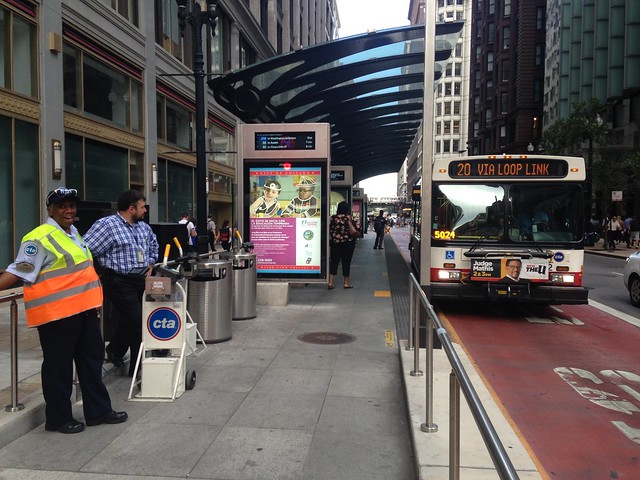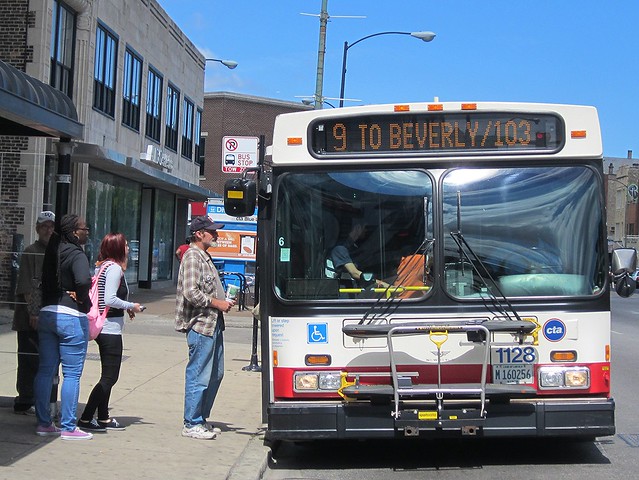
There was some good news for Chicago straphangers last week. TransitCenter, a New York-based foundation dedicated to improving urban mobility, awarded 16 grants, totaling more than $17 million, to civic organizations, universities, and municipalities, and the Active Transportation Alliance was one of the winners. The Active Trans proposal, called Speeding Up Chicago’s Buses, involves working with the CTA and the Chicago Department of Transportation to eliminate some of the roadblocks to faster transit and higher ridership.
Like many large U.S. cities, Chicago has seen an increase in rail ridership but a decrease in bus use in recent years. In 2015, ‘L’ ridership hit record levels, with 241.7 million rides. But, while buses still accounted for the majority of the rides last year, bus use dropped for the third year in a row, falling by 0.6 percent from 2014 levels to 274.3 rides.
“Declining bus use is not acceptable,” said Kyle Whitehead, director of government relations for Active Trans. When bus ridership falls, he noted, it can lead to reductions in the hours and frequency of service, which in turn can reduce ridership, creating a vicious cycle.
“That has an equity impact,” Whitehead said. “Many parts of town without easy rail access are low-to-moderate-income communities of color. If bus service declines, it disproportionately affects people in these neighborhoods."
Whitehead said Active Trans will use the grant to expand on the transit advocacy they’ve done over the last few years, including outreach on the city’s Ashland Avenue bus rapid transit proposal. That project is currently on hold due to backlash from residents and merchants against plans to create bus-only lanes and limit left turns from the avenue. But if the downtown Loop Link BRT corridor, which opened last December, is ultimately judged a success, it could lead to renewed interest in the Ashland proposal.
Active Trans hopes to use the grant to focus on high-ridership bus corridors like Ashland that currently have less-than-stellar bus speeds. Strategies could include dedicated lanes, transit signal priority, and off-board fare collection, which is currently being piloted at bus stops by the Belmont Blue Line station and at Madison Avenue and Dearborn Street along the Loop Link route.
“The CTA has expressed interest in doing these things more aggressively at scale around the city,” Whitehead said. “They wrote a letter of support for our application, which was instrumental in helping us win the grant.” TransitCenter received a total of 120 grant applications.
The plan is for Active Trans to do an analysis of the existing level of service on the high-ridership bus routes and recommend things that could be done to improve service. As part of their research, they’ll be taking input from local residents, community organizations, and chambers of commerce to find out what the issues are with particular routes.
“We plan to feature these stakeholders in the report,” Whitehead said. “And once it’s out we’ll work with the community partners to advocate for these recommended improvements to be implemented.” He added that they’ll look at strategies used last year by a coalition of NYC public transportation advocates, including TransitCenter, to push the Metropolitan Transportation Authority to make improvements.
See a full list of the 2016 TransitCenter grant winners here.





